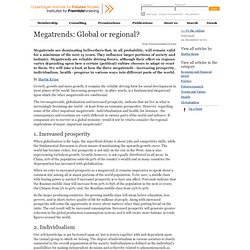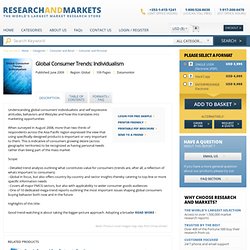

Microsoft Word - 學刊8-1稿樣_1000617.doc - 8-1-321-336.pdf. Changing Mass Priorities: The Link between Modernization and Democracy - ChangingMassPriorities.pdf. PDF995, Job 2 - download. World Competitiveness. During the last 25 years, the world of competitiveness was characterized by the shift from a split world to a global one. Communism collapsed, state-planned economies, which represented almost half of the world's population, turned to free-market principles, and globalization marched forward. Although, as a consequence, the world economy became more open and business opportunities were more accessible, countries remained very diverse in their living standards and legislation. In the next 25 years, these economic and social divergences will narrow. Wages, living standards, legislation and mind-sets will gradually converge. Countries will still be different and have their own national characteristics. Economic differences will even out… Economies will converge in several ways, starting with labor costs.
Tax systems, and the principles behind them, will become more harmonized. THE NEW GENERATION. Many generations have said “today’s young people only think of themselves,” but this time around it may be true.

We recently witnessed a crisis sparked by self-contained bankers, politicians and CEOs, with systems and those serving them unable to prevent abuse of the collective; but we ain’t seen nothin’ yet! Researchers and sociologists have noticed an increasing focus on the ME in recent generations. Termed by some as Generation Me[1], those from the most recent few decades are now on, entering, or preparing for the labor market. Megatrends: Global or regional? From Futureorientation 6/2005 Megatrends are dominating bellwethers that, in all probability, will remain valid for a minimum of the next 15 years.

They influence larger portions of society and industry. Megatrends are reliable driving forces, although their effect on regions varies depending upon how a certain (political) culture chooses to adapt or react to them. Global Consumer Trends: Individualism. Understanding global consumers’ individualistic and self expressive attitudes, behaviors and lifestyles and how this translates into marketing opportunities When surveyed in August 2008, more than two thirds of respondents across the Asia Pacific region expressed the view that using specifically-designed products is important or very important to them.

This is indicative of consumers growing desire (across geographic territories) to be recognized as having personal needs rather than being part of the mass market Scope: Highlights of this title: Good trend-watching is about taking the bigger-picture approach. Nearly three-quarters of global consumers attach importance to individuality and being able to express themselves. Self-congruent consumerism is a trend whereby the image that a person has of her/himself often influences the brand/product choice.
Key reasons to purchase this title: OverviewCatalystSummary. Global Consumer Trends: Individualism. Encyclopedia.com articles about Individualism. Individualism endorses the principle that the ends or purposes of the human individual possess dignity and worth that take precedence over communal, metaphysical, cosmological, or religious priorities.

While individualism may appeal to certain metaphysical or epistemological schools of thought such as nominalism or empiricism, it will be treated here as primarily a moral and/or political doctrine. Individualism is commonly seen by both its proponents and opponents to be the creation of the modern Western world, a development of Enlightenment liberal values. The term individualism was first coined in the nineteenth century, initially around 1820 in French, and then quickly spread to the other European languages. The diagnostic pundit: Individualism and its alleged discontents.
Allik&Realo_JCCP2004.pdf. Globalisation Asia-Pacific cultural shif. Globalisation prompts Asia-Pacific cultural shift It's goodbye homogeneity, hello diversity, as organisations in Asia-Pacific wake up to the realities of globalisation.

A recent study of the diversity and inclusion (D&I) strategies of 31 companies across the region, by global human resources consultancy Mercer, showed that most participating organisations had a D&I strategy in place, while those that did not are making plans to step into the loop. Topping corporate D&I agendas was gender, followed by multinational and ethnic mix. When asked to name their top three D&I strategies from a choice of seven different subjects, 74 per cent of respondent organisations cited gender as the main focus.
Attracting diverse talent was next in line, with 45 per cent citing national culture and 40 per cent citing race/ethnicity mix, with "race" defined as nationality and "ethnicity" as different groups within a single national culture. Global Consumer Trends - Individualism. International Markets Bureau MARKET ANALYSIS REPORT | OCTOBER 2010 Global Analysis These reports cover a wide variety of subjects and countries of interest to the sector.

New reports will be posted regularly. If you wish to be on e-mail distribution in order to receive the reports more quickly, or to comment on any of the reports, please contact infoservice@agr.gc.ca. “No Such Thing as Society”?: The Rise of Individualism and the Weakening of Social Cohesion · Sigma Scan. The idea that citizens have some sort of overarching interdependence between one another (the ‘common good’), or that government itself can be a force for positive social change, is placed under threat by the strengthening of this trend, as it arguably undermines the ability of the state to act as a mobiliser of collective action.

While there is a high degree of controversy and uncertainty around this issue, if the trend towards individualism deepens still further we could expect a number of possible impacts. Political philosophies extolling individualism tend to emphasise the virtues of dynamism, freedom and choice that individual responsibility is seen to bring. As such, we might expect this society to witness increased popularity of movements to reduce the role for the state as the primary provider of social services.
Privatised provision could potentially include services which are currently the exclusive preserve of the state [8] .